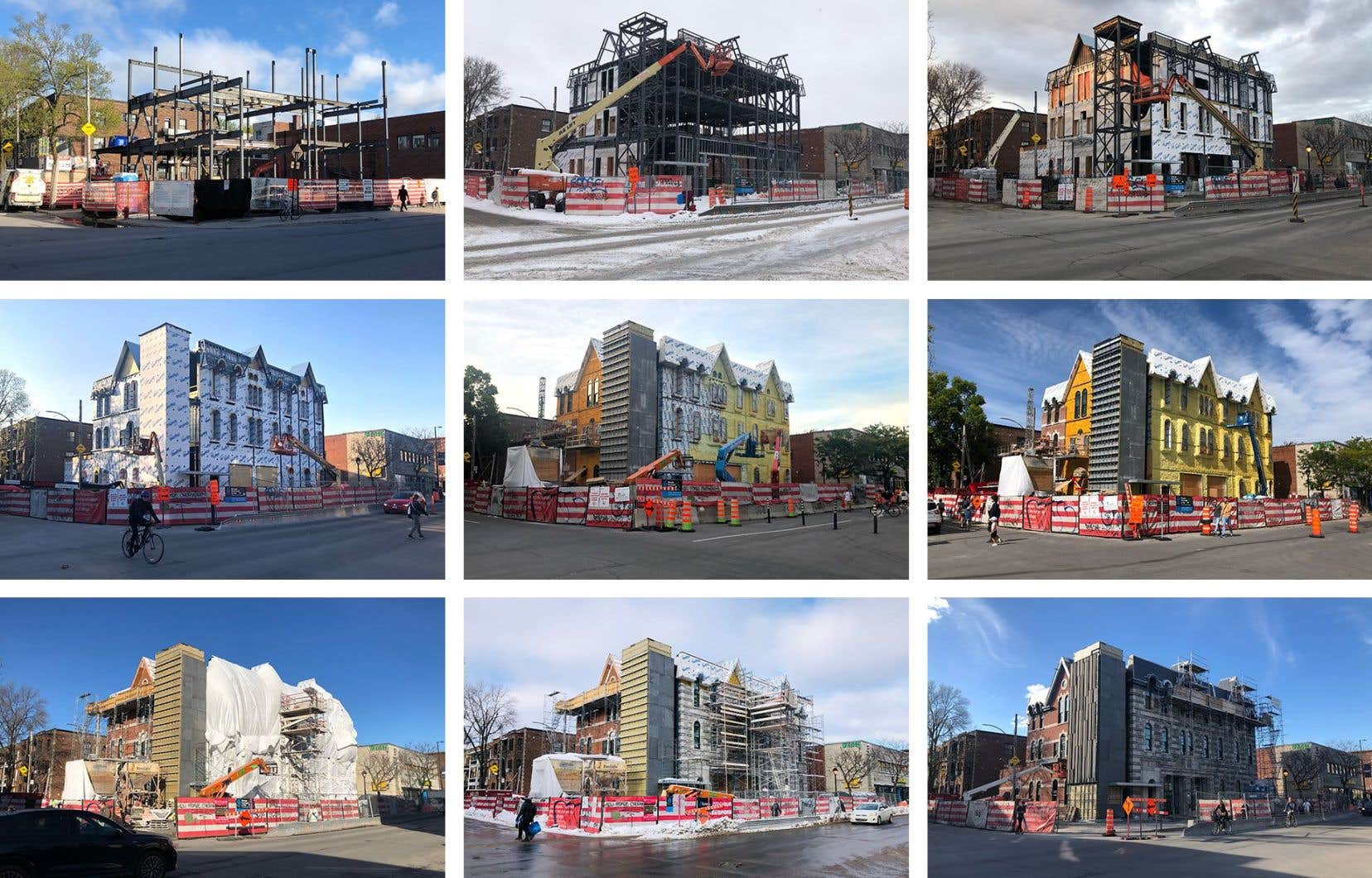After work spanning nine long years, barracks 26 is about to reopen its doors. The heritage building on Avenue du Mont-Royal, in Plateau Mont-Royal, has undergone a complete reconstruction and firefighters will be able to return to their new station next month.
The construction site is coming to an end. Only some work remains to be done on the main facade of the barracks and on the corner tower which covers an elevator. Landscaping will also have to be carried out around the building.
The restoration of the building did not go smoothly. Originally, in 2015, the City planned to rebuild the gray stone facade, reinforce the foundations and carry out asbestos removal work. But once the work began, the pitfalls piled up. As the side walls threatened to collapse, it became necessary to demolish what remained of the building.
In January 2019, the construction site was put on hold for many months, leaving a huge steel structure on the site, at the corner of Mont-Royal and des Érables avenues.
The City finally decided to rebuild the barracks identically – except for the corner tower which will have a contemporary design – by reusing some of the original materials.
Thus, the gray stones of the facade, which had been numbered and stored, were put back in place during the reconstruction. Not all of the gray stones could be reused, however, explains Despina Ruxandra Dogioiu, project manager at the Building Management and Planning Department of the City of Montreal, who has been working on the file since 2020. “There had some that were unrecoverable. But we recovered 80% of the decorative stones and 50% of the facing stones. »
Many other elements are not original, such as the bricks on the side walls and the wooden windows. The building will also house a new elevator and ventilation equipment.
kitchen fire
Barracks 26 is in fact the old town hall of the village of Lorimier, born in 1895 in a rapidly developing area. The young municipality did not have a long existence. Crumbling under debt, it was annexed to the City of Montreal in 1909. The city hall then underwent various uses before becoming barracks 26.
The building was the scene of a major fire in 1999 when firefighters rushed out of the station to respond to an alarm, leaving behind a pan on the stove. The repairs that were subsequently carried out were too basic to prevent water infiltration which damaged the building.
Such an event involving a forgotten pan could no longer happen, assures Mme Dogioiu. “Combat call systems are now installed in all barracks and automatically turn off the stove and barbecue as soon as the alarm goes off,” she explains. The building is also equipped with sprinklers.
In the heritage world, identical reconstruction is not something that we will necessarily promote. Recognition of heritage is anchored in notions of authenticity.
Fire station 26 was hit by a fire on February 22, when a generator test caused overheating. However, the incident was without consequences. “The damage was minimal,” maintains Mme Dogioiu.
The city was unable to confirm the total cost of the project on Thursday. The first phase launched in 2015 was expected to cost 11 million, before increasing to 22 million in 2020, when reconstruction became necessary.
Cramped site
The main challenge of the barracks 26 reconstruction project was the smallness of the site and the proximity to neighboring houses, explains the project manager. A liaison officer was hired and a good neighbor committee was established to keep neighbors informed of the steps. Clauses were also added to the contractor’s contract to limit noise, dust and vibrations.
Can a century-old building rebuilt identically in its form, but which has only retained some of its original materials, still claim to be heritage? “It’s difficult to have a clear opinion,” says Taïka Baillargeon, deputy director of policies at Héritage Montréal. “In the heritage world, identical reconstruction is not something that we will necessarily promote. Recognition of heritage is anchored in notions of authenticity. »
Still, the old and the new can coexist, according to her. “It’s not perfect. Sometimes you have to accept that there are things you can’t do. »
It is the historical reminder of a city, which did not last long, but which still had its importance in the history of this district of Montreal
This file, however, highlights the issue of preserving and maintaining heritage buildings, she adds. In 2015, the Heritage Council also criticized the City for not having sufficiently protected the building after the 1999 fire.
Member of the Plateau-Mont-Royal Historical Society, Gabriel Deschambault has for years criticized the City’s decision not to have taken advantage of the project to rebuild the corner tower as it was at the beginning of the 20th century.e century. Originally, this gray stone tower was pierced with balconies, but it was demolished in 1931 due to its state of decay. The tower was finally rebuilt in 1960, but without much aesthetic concern, in order to accommodate an elevator.
Although he still regrets the City’s decision, Mr. Deschambault judges that the rebuilt barracks have retained their value. “All buildings that are aging require work. It remains a heritage building, if only a reminder of the history of this sector of the Plateau. It is the historical reminder of a city, which did not last long, but which still had its importance in the history of this district of Montreal,” he explains.
Barracks 26 will be inaugurated in June, on a date which remains to be specified. For its part, the Plateau-Mont-Royal borough plans to shortly reveal the names of the cultural organizations that will occupy 3e floor of the building.
